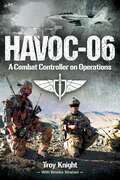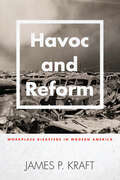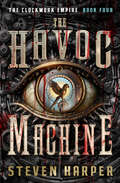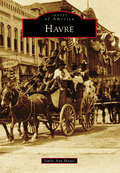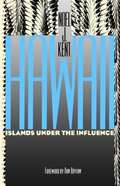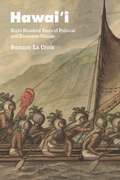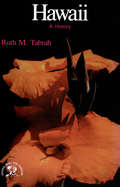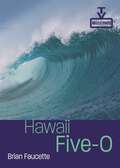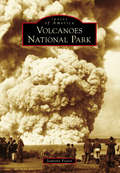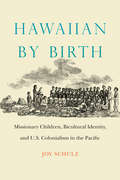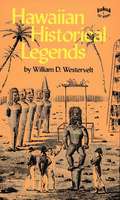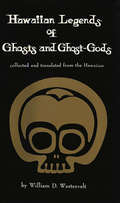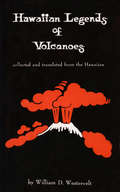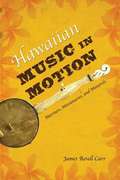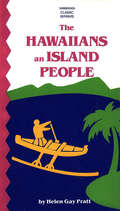- Table View
- List View
Having the World in View: Essays on Kant, Hegel, and Sellars
by John McdowellMcDowell builds on his much discussed Mind and World. He argues that the roots of some problems plaguing contemporary philosophy can be found in issues that were first discerned by Kant, and that the best way to get a handle on them is to follow those issues as they are reshaped in the writings of Hegel and Sellars. This new book will be a decisive further step toward healing the divisions in contemporary philosophy.
HAVOC-06: A Combat Controller on Operations
by Troy KnightI received a target indication from one of the rear team members and observed movement coming from the left of the area of engagement. I then saw them, two enemy fighters moving to a new position. I must have let rip about twenty rounds and not one of the rounds hit them. I had missed completely! &“You shit shot,&” swearing at myself under my breath. My teeth were clenched and I was pissed off at my own incapability with a rifle, however, I realised I had a primarily role to play and that was as the Platoon JTAC. Havoc-06 is the call sign of former Australian Combat Controller, Troy Knight. As a Royal Australian Air Force Airfield Defence Guard, Troy had not found the military adventure he sought; combat operations. His thirst for overseas deployment saw him privately contract his services in Iraq and South East Asia, but when he got whiff that the Australian Defence Force was raising a new defence capability, he couldn&’t help but want to be part of it. The new Defence capability, termed the &‘Special Tactics Project,&’ would see Troy undertaking the gruelling Commando Selection course and passing, making him one of Australia&’s first Combat Controllers attached to the Australian Army 2nd Commando Regiment. As a member of the Special Forces unit, Troy&’s lifelong dream of taking part in combat operations would come to fruition, but the reality of his dream would also play havoc on his life. Havoc-06 is the untold story of the Australian Combat Controller, but it is also Troy&’s personal story and one that will resonate with so many.
Havoc and Reform: Workplace Disasters in Modern America (Hagley Library Studies in Business, Technology, and Politics)
by James P. KraftHow disasters—that have wrecked work sites throughout American history, in all parts of the nation and all sectors of the economy—have also inspired policy reform.Workplace disasters have wreaked havoc on countless American workers and their families. They have resulted in widespread death and disability as well as the loss of property and savings. These tragic events have also inspired safety reforms that reshaped labor conditions in ways that partially compensated for death, suffering, and social dislocation. In Havoc and Reform, James P. Kraft encourages readers to think about such disastrous events in new ways. Placing the problem of workplace safety in historical context, Kraft focuses on five catastrophes that shocked the nation in the half century after World War II, a time when service-oriented industries became the nation's leading engines of job growth. Looking to growing areas of economic life in the Western Sunbelt, Kraft touches on the 1947 explosion of the Texas City Monsanto Chemical Company plant, the 1956 airliner collision over the Grand Canyon, the hospital collapses following the 1971 San Fernando earthquake, the 1980 fire at the Las Vegas MGM Grand, and the 1995 bombing of the Oklahoma City Federal Building. These incidents destroyed places of employment that seemed safe and affected a relatively wide range of working people, including highly trained, salaried professionals and blue- and white-collar groups. And each took a toll on the general public, increasing fears that anyone could be in danger of being killed or injured and putting pressure on public officials to prevent similar tragedies in the future.As Kraft considers how these tragedies transformed individual lives and specific work environments, he describes how employees, employers, and public leaders reacted to each event. Presented chronologically, his studies offer a unique and sobering outlook on the rise of a now vital and integral part of the national economy. They also underscore the ubiquity and persistence of workplace disasters in American history while building on and challenging literature about the impact of World War II in the American West. Within a broader frame, they speak to the double-edged nature of modern life.
Havoc, in Its Third Year
by Ronan BennettA penetrating and ambitious historical novel, Havoc, in Its Third Year is an ingenious, often deeply unnerving narrative of seventeenth-century England that speaks directly to the fanaticism and fears of today. The time is the early seventeenth century, as the quarrel between Royalists and Parliamentarians turns toward civil war, and that between Catholics and Protestants leads toward bloody religious tyranny; the place is a town in northern England, set in a grim landscape swept by crop failures, plague and rumors of war, in which rigid Puritans have taken over government and imposed their own rules. At the center of the novel is John Brigge, the Coroner and a Governor of the town, though not by any means as convinced a zealot as his fellow governors have become. Married and deeply in love with Elizabeth, who is pregnant with their first child, he has a guilty secret to hide in his affection for Dorcas, his wife's ward -- a secret which, in the world of religious prejudice and extremism toward which England is moving, can be lethal. Determined to obey the law, rather than prejudice and the need to make an example of an Irishwoman accused of murdering her own infant, Brigge draws upon himself the hostility and suspicion of the powerful men who have been his fellow governors and who now set out to destroy him in the name of morality. Brigge is both sympathetic and deeply vulnerable. He genuinely loves Elizabeth and longs for their child to be born, but he is also deeply attracted to Dorcas; he is, however guardedly, of "the old faith" and does not hesitate to hide a priest; he favors the wretched vagrants who infest the roads, seeking shelter and a bite to eat, and employs one of them on his farm. He insists on finding out the truth about the Irishwoman's baby, despite the fact that everybody has already decided on her guilt. In short, without intending to do so, John Brigge offers himself up as a victim by refusing to cooperate with the political and religious masters of the town or to subordinate his own conscience to their demand for rigid obedience and piety. Even his own clerk Adam, whom he regards as a son, turns against him in the end in a struggle that will almost cost Brigge his life and that sends him out into a cold and dangerous world, having sacrificed everything he once held dear, stripped of his power and authority, but made heroic by his commitment to love, truth and human feelings. Havoc, in Its Third Year is a novel of great power, drama and terror, at once a love story and a superb work of historical fiction. It confirms Ronan Bennett's reputation as a masterful creator.
The Havoc Machine (The Clockwork Empire)
by Steven HarperIn this steampunk adventure by the author of The Dragon Men, a femme fatale offers a vengeful vigilante a simple job that becomes deadly. The Clockwork Plague continues to incite destruction throughout the world. For Thaddeus Sharpe, the only solution for the disease is death. That is why he has dedicated his life to hunting and killing Clockworkers, and his mission brings him to the streets of St. Petersburg. There he meets a mysterious young woman named Sofiya Ekk, who offers him a proposition from her powerful employer, Mr. Griffin. Thad has his suspicions, but it&’s an offer he cannot refuse. In a nearby village, a mad Clockwork scientist named Mr. Havoc has taken residence in a castle. His dreadful experiments on men and machine terrify the locals. He has created a dangerous machine, a ten-legged robotic spider. Griffin doesn&’t care what happens to Havoc; he only wants the invention. Simple enough . . . But when Thad arrives at the castle with Sofiya, they make a startling discovery. Not only is Havoc hiding the machine, but he has also been experimenting on a little boy. Now Thad finds himself caught in a mystery he must quickly unravel before havoc reigns . . .Praise for the Novels of the Clockwork Empire &“Action, adventure, dirigibles, and mad scientists, oh my!&” —Night Owl Reviews on The Impossible Cube &“Harper creates a fascinating world of devices, conspiracies, and personalities. . . . Harper&’s world building is well developed and offers an interesting combination of science and steam.&” —SFRevu on The Doomsday Vault &“My favorite book in the series yet. I&’m not sure whether that&’s because I&’ve become so enamored with the world of the Clockwork Empire as a whole, or that the action sequences are nearly relentless, which a definite plus in this case.&” —That&’s What I&’m Talking About on The Dragon Men
Havre
by Emily Ann MayerTucked in a valley on the banks of the Milk River, Havre's history is incredibly diverse. It was populated first by American Indian tribes, who lived here for centuries and successfully lived off what the land, waters, and skies could provide. White settlers and other ethnic groups came later, bringing with them their own ways of life. Ladies and gentlemen arrived, looking for opportunities to build a new life and working to smooth out the rough reputation Havre had earned during its early days. Vice and virtue worked and lived alongside each other to create the largest community on Montana's Hi-Line.
Havre De Grace in the War of 1812: Fire on the Chesapeake
by Heidi L GlatfeiterIn the early morning hours of May 3, 1813, British Rear Admiral George Cockburn launched a brutal attack on the city of Havre de Grace, Maryland. Without mercy for age or infirmity, the British troops plundered and torched much of the town. It was the beginning of the Chesapeake Campaign of the War of 1812, and it would only end with the burning of the capital and the failed siege of Baltimore. Author Heidi Glatfelter traces the attack and the response of the residents of Havre de Grace--from the bravery displayed by John O'Neill, who was taken prisoner by the British, to quick-thinking citizens such as Howes Goldsborough, who found ways to save their homes and those of their neighbors from total destruction. Join Glatfelter as she reveals the stories of a town under siege and a community determined to rebuild in the aftermath.
Hawaii: Islands Under The Influence
by Noel J. KentReprint of the Monthly Review edition of 1983, with a new epilogue, and foreword by Dan Boylan. Annotation copyright by Book News, Inc. , Portland, OR
Hawai'i: Eight Hundred Years of Political and Economic Change (Markets And Governments In Economic History Ser.)
by Sumner La CroixRelative to the other habited places on our planet, Hawai‘i has a very short history. The Hawaiian archipelago was the last major land area on the planet to be settled, with Polynesians making the long voyage just under a millennium ago. Our understanding of the social, political, and economic changes that have unfolded since has been limited until recently by how little we knew about the first five centuries of settlement. Building on new archaeological and historical research, Sumner La Croix assembles here the economic history of Hawai‘i from the first Polynesian settlements in 1200 through US colonization, the formation of statehood, and to the present day. He shows how the political and economic institutions that emerged and evolved in Hawai‘i during its three centuries of global isolation allowed an economically and culturally rich society to emerge, flourish, and ultimately survive annexation and colonization by the United States. The story of a small, open economy struggling to adapt its institutions to changes in the global economy, Hawai‘i offers broadly instructive conclusions about economic evolution and development, political institutions, and native Hawaiian rights.
Hawaii: A Novel
by James A. Michener Steve BerryPulitzer Prize-winning author James A. Michener brings Hawaii's epic history vividly to life in a classic saga that has captivated readers since its initial publication in 1959. As the volcanic Hawaiian Islands sprout from the ocean floor, the land remains untouched for centuries--until, little more than a thousand years ago, Polynesian seafarers make the perilous journey across the Pacific, flourishing in this tropical paradise according to their ancient traditions. Then, in the early nineteenth century, American missionaries arrive, bringing with them a new creed and a new way of life. Based on exhaustive research and told in Michener's immersive prose, Hawaii is the story of disparate peoples struggling to keep their identity, live in harmony, and, ultimately, join together. BONUS: This edition includes an excerpt from James A. Michener's Poland. Praise for Hawaii "Wonderful . . . [a] mammoth epic of the islands."--The Baltimore Sun "One novel you must not miss! A tremendous work from every point of view--thrilling, exciting, lusty, vivid, stupendous."--Chicago Tribune "From Michener's devotion to the islands, he has written a monumental chronicle of Hawaii, an extraordinary and fascinating novel."--Saturday Review "Memorable . . . a superb biography of a people."--Houston Chronicle
Hawai'i: A History of the Big Island
by Robert F. OaksAlthough its soils are the youngest in the Hawaiian chain, the Big Island's chronicles are at times epic, tragic, and heroic, but always fascinating. Modern Hawai'i is filled with tradition and mythology, accommodating influences as diverse as its inviting landscape. Kamehameha stood tall to mold this nascent region into a unified kingdom and others fought to sustain it, while outside forces molded and shaped this island in astonishing ways.
Hawai'i: The Pacific State
by Ann RaysonAn introduction to Hawaii's history with theories on its origin, and to its geography, culture, and industries.
Hawaii: A Bicentennial History
by Ruth TabrahThis is part of a series of state histories which were written to commemorate the U.S. bicentennial in 1976. It provides a concise, readable history of Hawaii from the first Polynesian settlements to statehood and beyond. Emphasis is on U.S. involvement in the nineteenth century which led to annexation of Hawaii as a territory in 1898. The reigns and personalities of Hawaii's monarchs are described in detail.
Hawaii: A History
by Ruth M. Tabrah<P> To most Americans, Hawaii means ukuleles and native dancers, Waikiki and Diamond Head. <P> Hawaii is a romantic image learned from travel posters and the movies, and much of it, surprisingly, is true. But Hawaii is more than that. The people who have come here from Polynesia, Asia, Europe, and the Americas have made it a crossroads culture and a testing ground for fundamental American principals.
Hawaii End of the Rainbow
by Kazuo MiyamotoThis is the story of the Japanese who immigrated to Hawaii around the turn of the present century, worked as forced laborers on the sugar plantations, and afterwards remained in Hawaii to work as free men and to raise families. It is the story also of their children, born and raised in Hawaii, and who, during World War II, won fame and glory for themselves and their country on the bloody battlefields of Italy and southern Europe. But more than all of this, it is the story of the fate of the original immigrants during World War II. Rounded up by a panic-stricken American Government after the Japanese attack on Pearl Harbor, these people were sent to the mainland to spend the war years being confined in one refugee camp after another, all while their sons were winning fame as American combat troops.And finally, it is the story of these elderly people who, at the end of the war, became free men once again and were allowed to return to their beloved Hawaii to live out their lives in peace. The book is a tremendous panarama of the lives of these people, covering a period of almost seventy years, and written by a man who was a part of the story.
Hawaii Five-O (TV Milestones Series)
by Brian FaucetteHawaii Five-O, created by Leonard Freeman in 1968, is an American police procedural drama series that was produced by CBS Productions and aired for twelve seasons. Author Brian Faucette discusses the show’s importance by looking at how it framed questions around the security and economy of the Hawaiian Islands in connection with law enforcement, the diversity of its population, the presence of the US military, and the influx of tourists. Faucette begins by discussing how the show both conformed to and adapted within the TV landscape of the late 1960s and how those changes helped to make it the longest-running cop show in American TV history until it was surpassed by Law and Order. Faucette argues that it was Freeman’s commitment to filming on location in Hawaii that ensured the show would tackle issues pertinent to the islands and reflect the diversity of its people, culture, and experiences, while helping to establish a viable film and TV industry in Hawaii, which is still in use today. Faucette explains how a dedication to placing the show in political and social context of the late 1960s and 1970s (i.e., questions around policing, Nixon’s call for "law and order," the US military’s investment and involvement in the Vietnam War, issues of racial equality) rooted it in reality and sparked conversation around these issues. Another key element of the show’s success is its connection to issues of tourism and the idea that TV can create a form of "tourism" from the safety of the home. Faucette concludes with discussion of how Hawaii Five-O led to the development of other shows, as well as attempts to reboot the show in the 1990s and in 2010. Faucette makes a strong argument for the series as a distinctive artifact of a time in US history that witnessed profound changes in culture, politics, and economics, one that will excite not only scholars and students of television and media studies but any die-hard fan of gripping police procedurals.
Hawaii Pono: A Social History
by Lawrence H. FuchsThis book celebrates Hawaii. Hawaii Pono signifies that Hawaii is worthy of praise, since "pono" means right or excellent. This book originated in 1951 with research on the territorial policies of the United States government.
Hawai'i Volcanoes National Park
by Jeanette FosterLocated in one of the most isolated places on the earth, thousands of miles from the nearest landmass, the area surrounding the Hawai'i Volcanoes National Park was created by violent earthquakes and fiery volcanic eruptions. Shrouded in ancient myth and legend, the park's history dates back to a time before the Hawaiians first arrived. It was a time when gods and goddesses roamed throughout these islands; the most famous, the fierce goddess of the volcanoes, Pele, is believed to live here still. It took a decade of lobbying efforts to finally preserve this unique area as Volcanoes National Park. Since 1916, not only has this area been a national park for all to experience, but also the scientific advances due to the ability to constantly monitor the volcanic activity here has had a huge impact on the science of volcanology, understanding earthquakes, and creating an early warning system for tsunamis.
Hawaiian by Birth: Missionary Children, Bicultural Identity, and U.S. Colonialism in the Pacific (Studies in Pacific Worlds)
by Joy SchulzTwelve companies of American missionaries were sent to the Hawaiian Islands between 1819 and 1848 with the goal of spreading American Christianity and New England values. By the 1850s American missionary families in the islands had birthed more than 250 white children, considered Hawaiian subjects by the indigenous monarchy and U.S. citizens by missionary parents. In Hawaiian by Birth Joy Schulz explores the tensions among the competing parental, cultural, and educational interests affecting these children and, in turn, the impact the children had on nineteenth-century U.S. foreign policy. These children of white missionaries would eventually alienate themselves from the Hawaiian monarchy and indigenous population by securing disproportionate economic and political power. Their childhoods—complicated by both Hawaiian and American influences—led to significant political and international ramifications once the children reached adulthood. Almost none chose to follow their parents into the missionary profession, and many rejected the Christian faith. Almost all supported the annexation of Hawai‘i despite their parents’ hope that the islands would remain independent. Whether the missionary children moved to the U.S. mainland, stayed in the islands, or traveled the world, they took with them a sense of racial privilege and cultural superiority. Schulz adds children’s voices to the historical record with this first comprehensive study of the white children born in the Hawaiian Islands between 1820 and 1850 and their path toward political revolution.
Hawaiian Historical Legends
by William D. WesterveltThis literary treasure provides one of the earliest glimpses into pre-colonial Hawaaiin culture.This book, one of six written by Dr. Westervelt, is a fascinating compilation of Hawaiian legends and historical tales. The origins of the Hawaiian people, the demi-god Maui's search for immortality for mankind, the coming of Captain Cook, the wars of King Kamehameha, as well as other aspects of Hawaii's incredible history fill its pages. Librarians, students, collectors, and anyone who enjoys reading about ancient Hawaii will delight in Hawaiian Historical Legends. Dr. Westervelt is one of the best-known raconteurs of Hawaiian stories.Hawaiian Historical Legends presents a variety of stories both legendary and historical. The author also considers the question of Polynesian origins and the speculative subject of Spanish visitants.Other titles n this series on Hawaii include: Hawaiian Legends of Ghosts and Ghost Gods, and Hawaiian Legends of Old Honolulu Hawaiian Legends of Volcanoes.
Hawaiian Legends of Ghosts and Ghost-Gods
by William D. Westervelt1916. A diverse collection of the legends of the Hawaiian Islands. Contents Part I-Legends: The Ghost of Wahaula Temple; Maluae and the Underworld; A Giant's Rock Throwing; Kalo-Eke-Eke, The Timid Taro; Legendary Canoe Making; Lau-Ka-Ieie; Kauhuhu, the Shark God of Molokai; The Shark Man of Waipio Valley; the Strange Banana Skin; The Old Man of the Mountain; Hawaiian Ghost Testing; How Milu Became the King of Ghosts; A Visit to the King of Ghosts; Kalai-Pahoa, the Poison God; Ke-Ao-Mele-Mele, the Maid of the Golden Cloud; Poona and the Dragon; Ke-Au-Nini; and The Bride from the Underworld. Part II- Description: The Deceiving of Kewa; Homeless and Desolate Ghosts; Aumakuas or Ancestor Ghost Gods; The Dragon Ghost Gods; and Home of the Ancestors.
Hawaiian Legends of Old Honolulu
by William D. WesterveltIn bringing together this collection of Hawaiian legends, the author of this little book has conferred a great favor upon all those residents of Hawaii and of those visitors to its shores who ~pay take an interest in its original inhabitants, once an exceedingly numerous people, but now a scattering remnant only. To that native race this little book will be at once a joy and a sorrow;to the heart of the haole, who has lived among them, known them intimately for thirty years or more and learned to love them, this collection of thelegends of old Honolulu brings a warm "Aloha!"
Hawaiian Legends of Volcanoes
by William D. Westervelt"A richly entertaining series of Hawaiian tales with explanatory facts, which will delight and inform both the folklore fan and the general reader..." -The Honolulu AdvertiserHawaiian Legends of Volcanoes made its first appearance in 1916, in both American and British editions, as the third in a series that represented a pioneering study of Hawaiian folklore. The rich tradition of Hawaiian legends is showcased in it's purest form, making this an essential read for anyone living in Hawaii who wants to understand the local culture or anyone interested in classical folklore. The book also includes a study of Hawaiian geology, which is essential to understanding how the Hawaiian religion and classical Hawaiian stories developed.Legends and stories include: Ai-Au, The Forest Eater Pele and the Owl Ghost-God Hiiaka's Battle with the Demons The Annihiation of Keoua's Army Kapiolani and Pele and many more...Other volumes in the series about Hawaiian culture and history are Hawaiian Legends of Ghosts and Ghost-Gods and Hawaiian Legends of Old Honolulu.
Hawaiian Music in Motion: Mariners, Missionaries, and Minstrels (Music in American Life)
by James Revell CarrHawaiian Music in Motion explores the performance, reception, transmission, and adaptation of Hawaiian music on board ships and in the islands, revealing the ways both maritime commerce and imperial confrontation facilitated the circulation of popular music in the nineteenth century. James Revell Carr draws on journals and ships' logs to trace the circulation of Hawaiian song and dance worldwide as Hawaiians served aboard American and European ships. He also examines important issues like American minstrelsy in Hawaii and the ways Hawaiians achieved their own ends by capitalizing on Americans' conflicting expectations and fraught discourse around hula and other musical practices.
The Hawaiians an Island People
by Helen Gay Pratt"The old life described in this book disappeared long ago, but something of its heritage has, in Hawaii, become the heritage of all who live there today." With these words from the introduction to The Hawaiians: An Island People, Helen Gay Pratt invites her readers to become acquainted with Hawaii's original inhabitants and their fascinating way of life.

